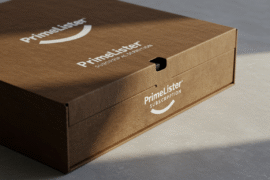This article may contain references to products or services from one or more of our advertisers or partners. We may receive compensation when you click on links to those products or services. Nonetheless, our opinions are our own.
The information presented in this article is accurate to the best of our knowledge at the time of publication. However, information is subject to change, and no guarantees are made about the continued accuracy or completeness of this content after its publication date.
You understand the importance of navigating the uncertain economic climate as a small business owner. With the repercussions of Trump’s tariff war looming significant, managing your supply chain may feel more daunting than ever. Tariffs have introduced volatility, affecting everything from the cost of raw materials to the availability of critical products. However, you don’t need to feel overwhelmed. By proactively addressing these risks, you can better position your business to thrive in a fluctuating market. We will explore practical strategies to help you mitigate supply chain disruptions, adapt to increased costs, and ultimately strengthen your business in the face of ongoing trade uncertainties. Let’s dive into the strategies that can help you gain control and protect your operations from the impact of change.
- Understanding the Impact of Tariffs on Your Business Operations
- Identifying Vulnerabilities in Your Supply Chain Strategy
- Building Stronger Relationships with Suppliers for Better Resilience
- Exploring Alternative Sourcing Options to Mitigate Risk
- Implementing Technology Solutions to Enhance Supply Chain Visibility
- Preparing a Contingency Plan for Future Tariff Changes
- Frequently Asked Questions
- Recommended Reads
Understanding the Impact of Tariffs on Your Business Operations
When navigating the complexities of tariffs, realizing how they can ripple through your supply chain and overall business operations is essential. The increased costs associated with imported materials may force you to make difficult decisions, such as raising prices or cutting profit margins. Here are a few strategies to combat these challenges:
Diversify Suppliers
By working with multiple domestic and international suppliers, you can better manage costs and mitigate risks associated with tariffs on specific goods. However, diversification comes with logistical and contractual challenges, so careful planning is necessary.
Invest in Local Sourcing
Reassessing your supply chain to source materials locally can significantly reduce the burden of tariffs while supporting local economies. Local suppliers may offer competitive pricing, shorter lead times, and improved reliability.
Negotiate Contracts
Open discussions with suppliers regarding cost-sharing strategies can prevent the entirety of increased costs from falling on your shoulders. Many suppliers are open to renegotiation, especially if they value a long-term business relationship.
Additionally, embracing technology can enhance your ability to adapt swiftly. Implementing inventory management systems can help you forecast demand and adjust orders in real-time, minimizing excess stock and reducing storage costs during turbulent times. Consider the following tools:
| Tool | Benefits |
|---|---|
| Supply Chain Management Software | Enhances visibility and tracking of goods at every stage. |
| Demand Forecasting Tools | It helps predict future demand trends for proactive adjustments. |
| Inventory Optimization Tools | Reduces costs associated with excess stock and improves turnover rates. |
Identifying Vulnerabilities in Your Supply Chain Strategy
In the evolving supply chain management landscape, small businesses must take a proactive approach to identifying vulnerabilities that could jeopardize their operations. Start by conducting a thorough risk assessment of your supply chain. This involves evaluating every tier of your suppliers, understanding their reliability, and analyzing their financial health. Ask yourself questions such as:
- Who are my key suppliers, and how dependent am I on them?
- Are there alternative suppliers that can step in if my primary ones fail?
- What geopolitical factors could impact my supply chain?
Tools like SWOT (Strengths, Weaknesses, Opportunities, Threats) analysis can help you map out potential risks. You can also create a simple table to track supplier performance metrics:
| Supplier | On-time Delivery (%) | Quality Score (1-10) | Backup Supplier Available |
| Supplier A | 95% | 9 | Yes |
| Supplier B | 80% | 7 | No |
| Supplier C | 78% | 6 | Yes |
Regularly reviewing this data ensures you stay ahead of potential disruptions. Recognizing vulnerabilities early allows your business to pivot and adapt, allowing you to survive and thrive amid uncertainty.
Building Stronger Relationships with Suppliers for Better Resilience
Forging more profound connections with suppliers is essential to navigating supply chain challenges. Start by establishing regular communication to understand their capabilities and constraints. This helps in predicting potential disruptions and fosters a sense of partnership. Here are some strategies to consider:
Collaborative Planning
Work with suppliers to develop joint forecasts and scenarios that help both parties prepare for shifts in demand.
Diverse Supplier Network
Identify and maintain relationships with multiple suppliers for critical components. This reduces the risk of depending too heavily on one source.
Feedback Loop
Create a system to provide constructive feedback, improving supplier services’ quality and efficiency.
Consider setting up a simple Supplier Relationship Dashboard to keep track of key metrics and interactions:
| Supplier Name | Performance Rating | Last Communication | Action Items |
| Supplier A | 4.5/5 | 2023-10-01 | Schedule next meeting |
| Supplier B | 4.0/5 | 2023-09-15 | Request updated pricing |
Voted "Best Overall Budgeting App" by Forbes and WSJ
Monarch Money helps you budget, track spending, set goals, and plan your financial future—all in one app.
Get 50% OFF your first year with code MONARCHVIP
Exploring Alternative Sourcing Options to Mitigate Risk
Exploring new sourcing strategies can strengthen your business against tariff-related disruptions. Consider these alternatives:
Local Suppliers
Connecting with nearby manufacturers reduces shipping costs and time while fostering a sense of community and support for local economies.
Diversification
Explore multiple suppliers across different regions instead of relying on a single supply source. This will cushion against localized disruptions and increase bargaining power.
Global Suppliers
Engaging with suppliers in countries less affected by tariffs can help mitigate cost increases.
Collaborative Sourcing
Partnering with other small businesses enables bulk purchasing, reducing individual costs and providing negotiation leverage.
| Option | Benefits | Considerations |
| Local Suppliers | Reduced costs, faster delivery | Limited product range |
| Diversification | Risk mitigation | Complex coordination |
| Global Suppliers | Cost-effective options | Logistical challenges |
| Collaborative Sourcing | Bulk discounts | Partnership dynamics |
Implementing Technology Solutions to Enhance Supply Chain Visibility
Leveraging technology can improve supply chain visibility, helping businesses track shipments in real time, monitor inventory, and gain insights into supplier performance. Consider these tools:
| Tool Type | Description |
| ERP Systems | Integrates various business processes for streamlined operations. |
| Supply Chain Visibility Platforms | Offers end-to-end insight into your supply chain. |
| Supplier Portals | Facilitates collaboration and communication with suppliers. |
Preparing a Contingency Plan for Future Tariff Changes
Having a contingency plan in place is crucial. Consider these steps:
- Analyze the Impact: Evaluate how tariffs could affect your supply chain costs.
- Diversify Sourcing: Explore alternative suppliers domestically and internationally.
- Price Adjustments: Prepare to adjust pricing strategies to accommodate cost increases.
- Inventory Management: Increase stock levels of critical items before tariff hikes take effect.
- Financial Buffer: Set aside funds to absorb costs from shifting tariffs.
| Action Item | Deadline | Responsible Party |
| Supplier Research | 1 Month | Purchasing Manager |
| Cost Analysis | 2 Weeks | Finance Team |
| Inventory Assessment | 1 Month | Warehouse Manager |
| Customer Communication Plan | 3 Weeks | Marketing Director |
By proactively preparing for tariff changes, you position your business to react swiftly and focus on long-term sustainability.
Frequently Asked Questions
What are the leading supply chain risks small businesses face due to tariffs?
Small businesses often face increased costs, longer lead times, and uncertainty in sourcing materials. Tariffs can raise the prices of imported goods, leading to higher production costs and tighter profit margins.
How can small businesses diversify their supply chains?
Creating a diverse supply chain involves sourcing materials from multiple suppliers, including domestic options, to mitigate dependency on any single supplier or country.
What role does technology play in managing supply chain risks?
Technology enhances visibility across the supply chain, enabling small businesses to respond quickly to disruptions. Supply chain management software helps track shipments and streamline communication with suppliers.
By following these strategies, small businesses can strengthen their supply chains and remain resilient in an ever-changing economic landscape.

Reviewed and edited by Albert Fang.
See a typo or want to suggest an edit/revision to the content? Use the contact us form to provide feedback.
At FangWallet, we value editorial integrity and open collaboration in curating quality content for readers to enjoy. Much appreciated for the assist.
Did you like our article and find it insightful? We encourage sharing the article link with family and friends to benefit as well - better yet, sharing on social media. Thank you for the support! 🍉
Article Title: How Small Businesses Can Combat Supply Chain Risks Amid Trump’s Tariff War
https://fangwallet.com/2025/03/19/how-small-businesses-can-combat-supply-chain-risks-amid-trumps-tariff-war/The FangWallet Promise
FangWallet is an editorially independent resource - founded on breaking down challenging financial concepts for anyone to understand since 2014. While we adhere to editorial integrity, note that this post may contain references to products from our partners.
The FangWallet promise is always to have your best interest in mind and be transparent and honest about the financial picture.
Become an Insider

Subscribe to get a free daily budget planner printable to help get your money on track!
Make passive money the right way. No spam.
Editorial Disclaimer: The editorial content on this page is not provided by any of the companies mentioned. The opinions expressed here are the author's alone.
The content of this website is for informational purposes only and does not represent investment advice, or an offer or solicitation to buy or sell any security, investment, or product. Investors are encouraged to do their own due diligence, and, if necessary, consult professional advising before making any investment decisions. Investing involves a high degree of risk, and financial losses may occur including the potential loss of principal.
Source Citation References:
+ Inspo
There are no additional citations or references to note for this article at this time.












































